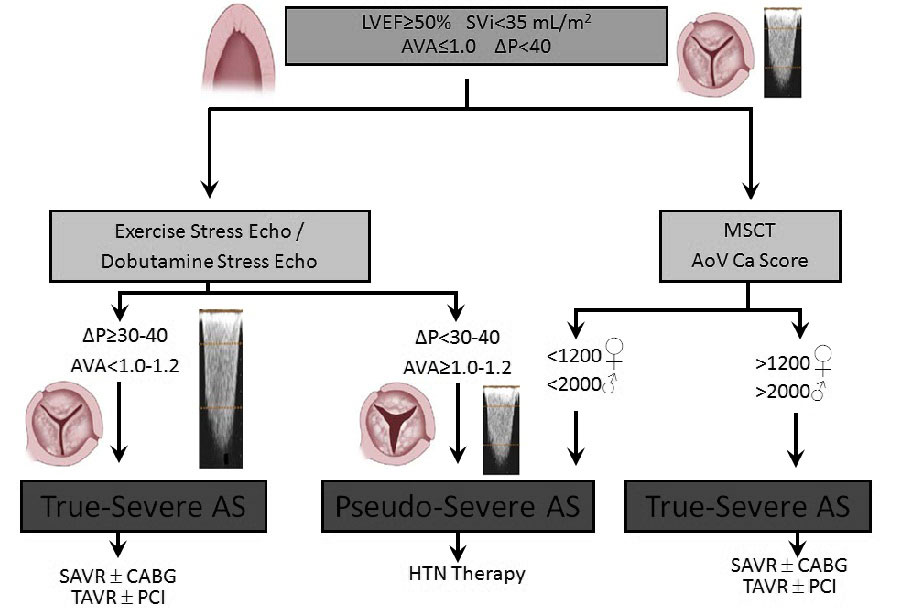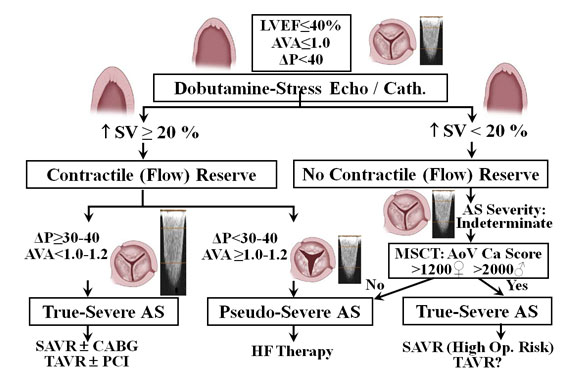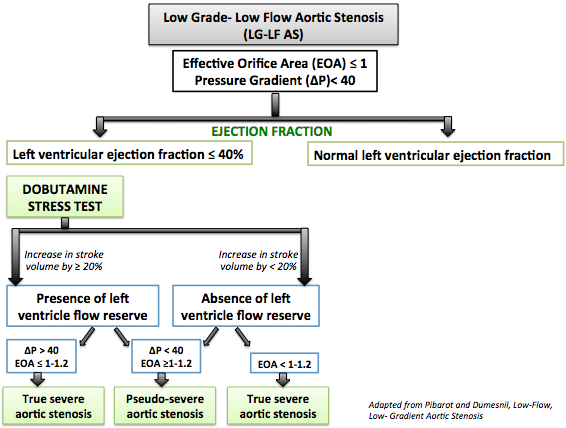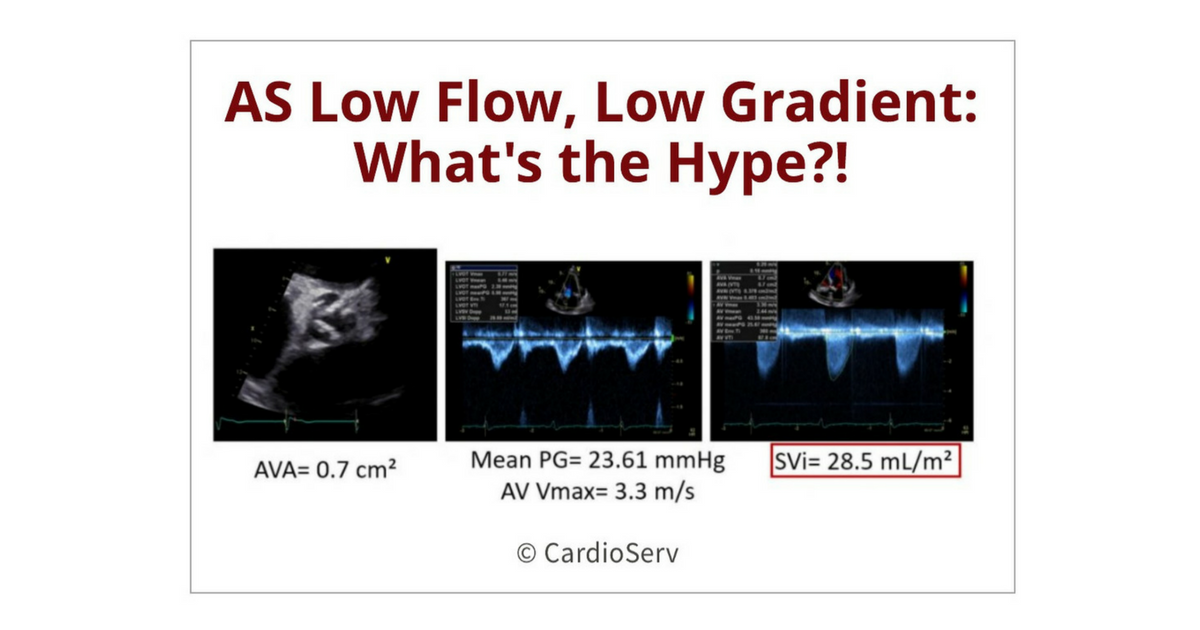low flow low gradient aortic stenosis review
AVA estimates are crucial in the diagnosis of aortic stenosis and its severity along with the measurement of transvalvular flow and the determination of the magnitude and duration of the transvalvular pressure gradient. 1 AS has an estimated prevalence of 76 million among adults 75 years of age in North America and Europe.

Complex Scenarios Paradoxical Low Gradient As In Normal Patients
Pulmonic stenosis is a defect of the pulmonic valve in which the valve is stiffened causing an obstruction to flow.

. Reviewupdate the information highlighted below and resubmit the form. Dynamic variation of LVOT gradient in hypertrophic cardiomyopathy HCM can be quite variable. A murmur will be high pitched if there is a large pressure gradient across the pathologic lesion and low pitched if the pressure gradient is low.
Intervention versus observation in symptomatic patients with normal flow low gradient severe aortic stenosis. This disease is typically congenital benign and diagnosed in pediatric patients with potentially curative treatments. Cardiac imaging for assessing low-gradient severe.
JACC Cardiovasc Imaging 201811122532. The etiology of aortic stenosis AS can be confirmed by the visualization of either a bicuspid valve or calcification. When the left ventricular cavity is small due to hypovolemia or dehydration the gradient can rise significantly.
Therefore it is only when the heart relaxes during diastole that the coronary vessels open up and allow for perfusion. If a valve doesnt fully open or close blood flow is reduced or blocked. Pulmonic stenosis is also present in adults usually in conjunction with severe cardiac structural diseases.
In aortic valve stenosis the aortic valve between the lower left heart chamber left ventricle and the aorta does not open completely. The coronary arteries originate off of the ascending aorta and continue onto the surface of the heart the epicardium. Full size image With cut-off value of AVA CT 12 cm 2 455 of 511 890.
It accounts for 35 of moderate to severe native valve diseases and is most often degenerative in pathogenesis. When the heart contracts during systole the contraction compresses the coronary arteries which prevents perfusion. This can be converted to an estimation of the pressure drop.
This review discusses the natural history of moderate aortic stenosis along with the role of multimodality imaging in risk stratification in these patients. Aortic stenosis AS is the most prevalent valvular heart disease. The systemic pulse pressure is approximately proportional to stroke volume or the amount of blood ejected from the left ventricle during systole pump action and inversely proportional to the compliance similar to Elasticity of the aorta.
For example the murmur of aortic stenosis is high. Peak systolic flow velocity. The aorta has the highest.
Pulse pressure is the higher systolic blood pressure minus the lower diastolic blood pressure. 2 With an aging population its prevalence is expected to increase. Mild 15 cm 2 25 mmHg 3 ms.
Pressman G Banai S et al. The severity of the stenosis can be estimated by measuring high-velocity flow across the valve by Doppler. AS aortic stenosis AVC aortic valve calcium score LF-LG low-flow and low-gradient LVOT left ventricular outflow tract.
Various manoeuvers like isometric handgrip Valsalva maneuver and standing can bring out the gradient well when it is low in the basal state.

Low Flow Low Gradient Aortic Stenosis Still A Diagnostic And Therapeutic Challenge Vogelgesang 2017 Clinical Cardiology Wiley Online Library

Complex Scenarios Low Gradient In Low Ef As Patients

Aortic Stenosis Echocardiography Wikidoc

Dobutamine Stress Echocardiography In Low Flow Low Gradient Aortic Stenosis Flow Reserve Does Not Matter Anymore Journal Of The American Heart Association

Progression Of Normal Flow Low Gradient Severe Aortic Stenosis With Preserved Left Ventricular Ejection Fraction American Journal Of Cardiology

Figure 1 From Low Gradient Aortic Stenosis Semantic Scholar

Distinction Of Classical And Paradoxical Low Flow Low Gradient Download Scientific Diagram

Evaluation And Management Of The Patient With Low Flow Low Gradient Download Scientific Diagram

Low Flow Low Gradient Aortic Stenosis When Is It Severe American College Of Cardiology

Simplifying The Approach To Classical Low Flow Low Gradient Severe Aortic Stenosis A Renewed Emphasis On The Resting Transthoracic Echocardiogram International Journal Of Cardiology

Benefit Of Transcatheter Aortic Valve Replacement In Patients With Paradoxical Low Flow Low Gradient Versus High Gradient Aortic Stenosis And Preserved Left Ventricular Function Circulation Cardiovascular Interventions

What Is New In Low Gradient Aortic Stenosis Surgery Tavr Or Medical Therapy Semantic Scholar

Prognosis Of Severe Low Flow Low Gradient Aortic Stenosis By Stroke Volume Index And Transvalvular Flow Rate Jacc Cardiovascular Imaging

Meta Analysis Of Outcomes Of Transcatheter Aortic Valve Implantation Among Patients With Low Gradient Severe Aortic Stenosis American Journal Of Cardiology

Paradoxical Low Flow Low Gradient Severe Aortic Stenosis A Distinct Disease Entity Heart

Aortic Stenosis Low Flow Low Gradient What S The Hype

Outcome Of Flow Gradient Patterns Of Aortic Stenosis After Aortic Valve Replacement Circulation Cardiovascular Interventions

Low Flow Low Gradient Aortic Stenosis When Is It Severe American College Of Cardiology

Case 3 Evaluation And Treatment Of Low Flow Low Gradient Aortic Stenosis Tctmd Com